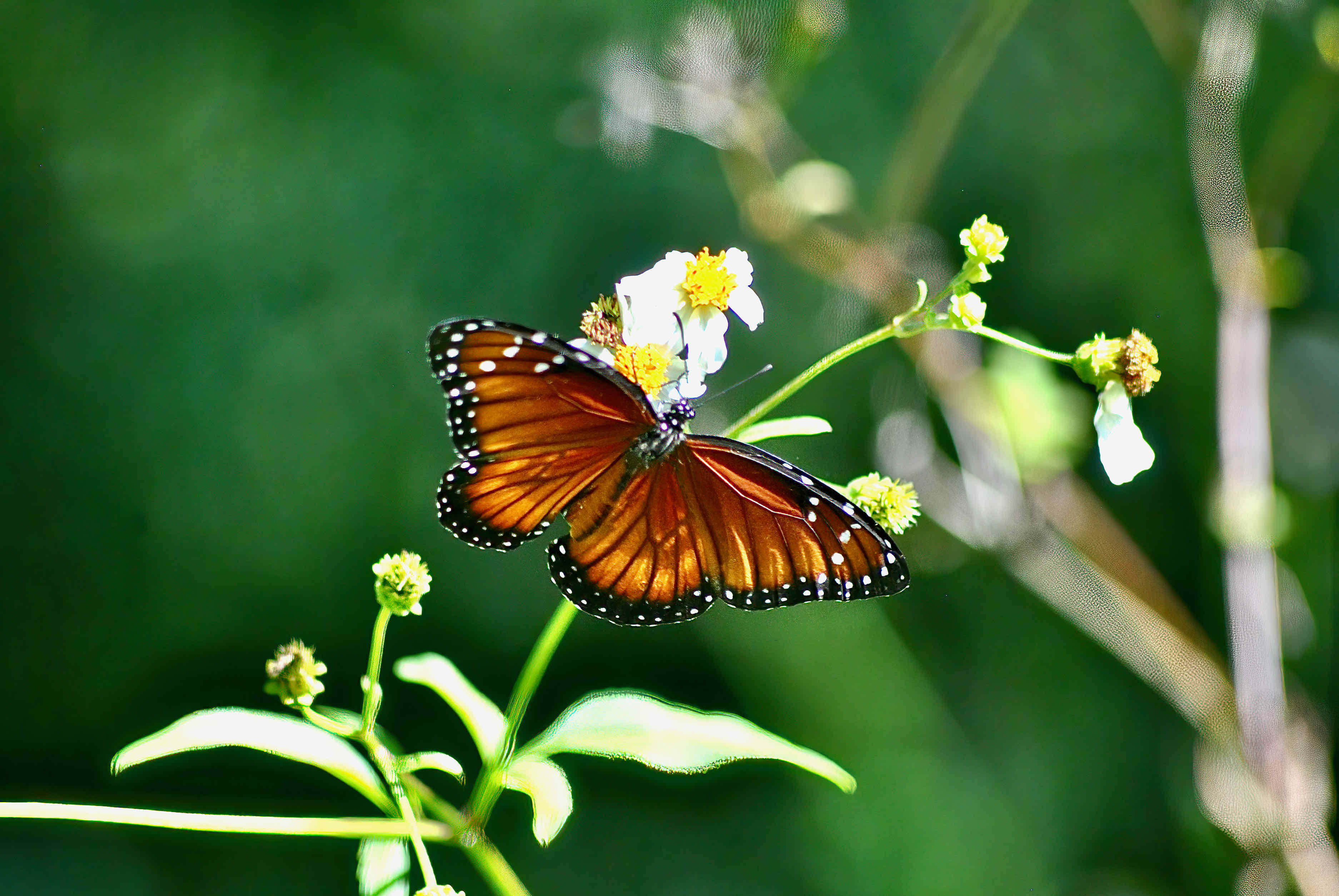
Soldier Butterfly, photographed at Loxahatchee National Wildlife Refuge, Boynton Beach, Palm Beach County, in September 2013.
This is one of three members of the genus Danaus found in Florida, and likely the rarest: the soldier butterfly, Danaus eresimus. It is a creature of the tropics, with South Florida being the northern limit of its range.
It's also found in south Texas and strays into Arizona and New Mexico. It's much more common southward, through the Caribbean, Mexico, Central America and South America to Brazil.
What separates the soldier and its cousins, the monarch and the queen, from other butterflies is their use of milkweeds as their host plants. Females lay their eggs on the leaves of milkweeds; as the caterpillars eat the leaves, their bodies acquire cardenolides, which give the adults their characteristic orange coloring and also makes them poisonous to hungry predators.
The orange serves as a signal to predators — mainly birds — that the butterflies aren't edible and in fact eating one might kill them. A bird biting one won't forget the experience.
The soldier is fairly large, having a wingspan of about 2.75 to 3.75 inches. It hangs out in open fields and pastures, and on the edges of tropical forests. It is active year-round in South Florida, but is most likely to be seen in the fall and early winter — October to December. It dines on the nectar of various flowers, Spanish needles in the case of photographs here.
It can be difficult to tell the three apart. Throw in a ringer — the viceroy, which is not a member of Dananus but closely resembles the monarch — and it can be confusing to sort these guys out in the field.
Both the monarch and the viceroy have heavy black lines along their hindwings that create a kind of triangle effect. The viceroy also has an arcing black line through the hindwings that the monarch doesn't have. If you don't see these lines, you're likely looking at a soldier or a queen. The soldier so closely resembles the queen that some call it the tropical queen. The easiest way to tell the two apart is to look at the upper side of the wings. The soldier has well-defined black veins while the queen does not. The shade of orange does vary among the four but they're close enough to each other that they reinforce the deterrence effect on predators.
The soldier, monarch, queen and viceroy are members of the Nymphalidae, or brush-foot, family.
